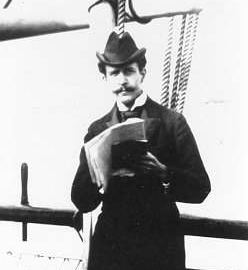 | ||
The Antoniadi scale is a system used by amateur astronomers to categorise the weather conditions when viewing the stars at night.
Contents
Invention
The Antoniadi scale was invented by Eugène Antoniadi, a Greek astronomer, who lived from 1870 to 1944. Living most of his life in France, he spent his time viewing Mars from Flammarion's observatory. He was very prestigious and was eventually given access to the Meudon Observatory, the largest of the time.
Current usage
Now the scale is seen as the metric system of astronomy, being used as a default measurement all over the world.
Description
The scale is a five-point system, with 1 being the best seeing conditions and 5 being the worst. The actual definitions are as follows:
- (I.) Perfect seeing, without a quiver.
- (II.) Slight quivering of the image with moments of calm lasting several seconds.
- (III.) Moderate seeing with larger air tremors that blur the image.
- (IV.) Poor seeing, constant troublesome undulations of the image.
- (V.) Very bad seeing, hardly stable enough to allow a rough sketch to be made.
Note that the scale is usually indicated by use of a Roman numeral or an ordinary number.
Other ways of indicating seeing
Astronomers have devised several methods for defining the quality of seeing apart from the Antoniadi scale, including:
